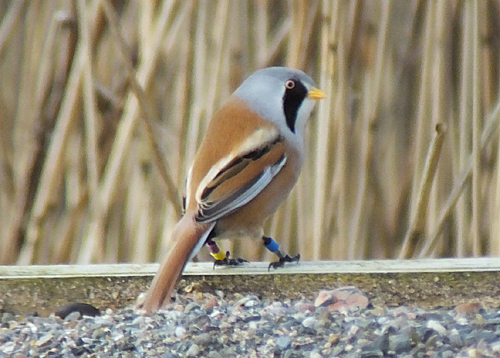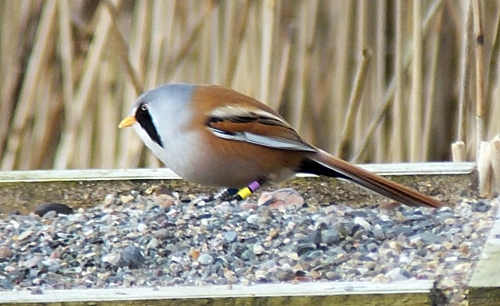- Home
- FAQs
- Customer Video Gallery
- Customer Photo Gallery
- Bird Facts
- Bird Food Blog
- Bird Information
- Feeding Advice
- Small Animal Information
- A to Z of Guinea Pigs
- A to Z of Hamsters
- A to Z of Rabbits
- Basic Care for Guinea Pigs
- Basic Care for Hamsters
- Basic Care for Rabbits
- Basic care for Chinchillas
- Basic care for Ferrets
- Basic care for Gerbils
- Basic care for Mice
- Basic care for Rats
- Buying a Healthy Small Animal
- Does your Reptile need a Licence
- Equipment for Ferrets
- Equipment for Hamsters
- Equipment for Mice
- Equipment for your Chinchilla
- Equipment for your Gerbil
- Equipment for your Guinea Pig
- Equipment for your Rabbit
- Keeping a House Rabbit
- Dog Information
- Cat Information
- Customer Information
- Fat Balls
- Suet Pellets
- Straights
- Seed Mixes
- Suet Treats
- Mealworms
- Bird Feeders
- My Account
Bearded Tits
Date: 2014-03-20 14:02:51 | Category: Bird Watching | Author: Neill Hunt
Bearded Tits are fabulous little birds, their plumage is outstanding, they are highly habitat dependent, they are difficult to see and unfortunately the habitat they need is dwindling. These are all the reasons you need to go and have a look for them.
Their name is a bit miss-leading too, as the bird doesn’t actually belong to the Tit family at all. It is in fact a member of the Babbler family (parrobills) and it is the only representative of that group to occur in Europe.
The Bearded Tit is totally dependent on Reed bed habitat and this is a fairly uncommon commodity in the UK. There are approximately 600 breeding pairs throughout the country and the breeding sites are fairly well scattered and isolated, from Leighton Moss in Lancashire, the only west coast site, to East Anglia north into Lincolnshire and Humberside and at a few reed bed sites dotted along the south coast.
They can often be difficult to see, generally because of the extensive reed beds they live in and the relatively small number of birds within. They will often stay low especially in windy conditions so seeing them can be frustrating.

The best time to look for them is in the spring when males are actively searching out the females, making nests and later in the season searching for food for the young. The call can alert you to their presence as it is very distinctive, a loud sharp ‘ping’.
Bearded Tits are unusual in their feeding habits, the birds need grit to help with digestion of seed, at many locations many organisations such as the RSPB will put out grit trays (like bird tables) with grit on. If you can locate one of these, it’s worth waiting around for a while as you may just be lucky enough to see a bird visit as I did at Leighton Moss last week.
Happy birding.




